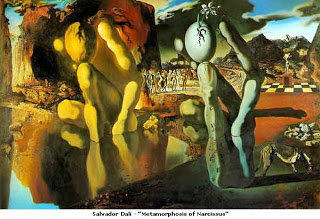
BY CEREN TURAN (CS/IV)
c_turan@ug.bilkent.edu.tr
If there were a “Best Creative Subconscious Mind Award,” I’m pretty sure I would be among the nominees. The subconscious is of course a very extensive area, of which only a small piece has yet been discovered. However, one doesn’t need detailed knowledge of science to have some idea about it, thanks to the mediator we have between the subconscious and the conscious mind, also known as dreams. It is often risky to talk or write about dreams, mainly because there are so many interpretations of them by various people, most of these with no grounds. So, I’m pleased to say that instead of the interpretation of dreams, I want to focus on a different aspect: that is, “dream images as an art form.”
Readers interested in art or more specifically in painting are likely to have started protesting now due to the almost inevitable association proposed by the term “dream images”: the surrealist painters, who are well-known for their dream paintings. The surrealist group includes painters like Salvador Dali, who strive to reflect the dreams (subconscious images) they have in their heads using oil on canvas, sometimes with the help of drugs to expand their imaginations. The resemblance between the already-existing dream paintings and my suggestion of dream images is hard to ignore, especially considering that the prior were my starting point in the first place.
However, there is one aspect of a dream image that makes it unique, not only when compared to paintings that have a similar focus but when compared to other art forms as well. Dream images are not to be effected by the perceptions of one’s sensory organs during their creation. Art is almost always a combination of the hard work of mind and body. For instance, in painting, the eyes are responsible for the perception of the outer world, the brain for coming up with the composition and the hands for painting that composition. The same three-step (or perhaps sometimes more) process goes for other art disciplines as well.
 Dream images, on the other hand, are neither translated or modified by the conscious mind – which often lacks the ability to make sense of dreams – nor restricted by the talent of the dreamer in reflecting themselves to the outer world. The core idea is to have an image in one’s mind while one is asleep – when the subconscious mind is awake – and to put that image, or sequence of images, on paper. As impossible as the suggestion may seem when first read, recent developments in science indicate that important steps have been taken toward the creation of devices that can decipher dreams. Although their accuracy is less than ideal at the moment, the existence of such machines is quite promising.
Dream images, on the other hand, are neither translated or modified by the conscious mind – which often lacks the ability to make sense of dreams – nor restricted by the talent of the dreamer in reflecting themselves to the outer world. The core idea is to have an image in one’s mind while one is asleep – when the subconscious mind is awake – and to put that image, or sequence of images, on paper. As impossible as the suggestion may seem when first read, recent developments in science indicate that important steps have been taken toward the creation of devices that can decipher dreams. Although their accuracy is less than ideal at the moment, the existence of such machines is quite promising.
As for the reason why I think the products of the subconscious mind are worthy to be presented as an art form, I believe that oftentimes the subconscious mind acts like a painter who has produced plenty of fascinating works but can never reach the right people, the ones who will truly appreciate them. Some dreams, for example, have small details from our lives, like something we ate that day, or an idea that passed through our mind for only two seconds. They form a very creative composition in the dream but leave the dreamer himself to struggle, like a person trying to understand the painter’s aim or feelings in painting the image that is standing in front of his eyes.
Therefore, although it may not be possible very soon, I think that mapping of the subconscious mind to another medium that can be perceived by the conscious mind will not only result in works pleasing to the eye, but will also help people to better understand themselves and humankind in general. After all, isn’t that what the arts are for?
